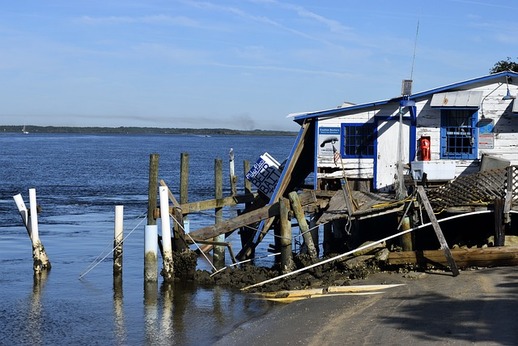
A pool is a place of joy and relaxation, especially when the water shimmers in the sun. But when water damage seeps into this paradise causing damage, the center of your backyard retreat may crumble. Imagine the chaos: chipped tiles, soggy decks, and a once-inviting pool ruined by the aftermath of water intrusion.
In this guide, we embark on a journey to restore the vitality of water-damaged pool areas. From assessing the extent of damage to reviving the aesthetic appeal, we navigate through the intricacies of pool repair. Join us as we dive into the depths of understanding, armed with practical solutions to breathe life back into your aquatic escape.
Your pool, once a beacon of serenity, can transform into a source of distress when water damage takes hold. This guide is not just about fixing cracks and replacing tiles; it’s a comprehensive exploration of how to revive the soul of your pool area. As we embark on this journey, imagine your pool area not just as a place to cool off but as a thriving oasis—a testament to resilience and restoration. Let’s explore the steps and strategies to reclaim the beauty and functionality of your water-damaged pool area.
See also our post on Professional Water Damage Restoration Services, West Lake Hill, TX
Assessing the Extent of Water Damage
1.1 Inspection of Pool Structure
Conduct a thorough examination of the pool structure, including the walls, floor, and surrounding areas, to identify visible signs of water damage.
1.2 Deck and Coping Evaluation
Inspect the pool deck and coping for cracks, shifting, or water-induced damage, as these are common areas vulnerable to water intrusion.
1.3 Tile and Grout Examination
Examine tiles and grout for any signs of damage or separation, which can indicate water-related issues in the pool area.
1.4 Landscaping Assessment
Evaluate the landscaping around the pool, checking for soil erosion or improper drainage that may contribute to water damage.
1.5 Professional Inspection
Engage a pool professional or contractor for a comprehensive inspection to identify hidden or structural water damage.
Strategic Water Removal
2.1 Pumping and Draining
Utilize pumps to remove excess water from the pool and surrounding areas, preventing further damage.
2.2 Deck and Coping Drainage
Implement drainage solutions for the pool deck and coping, directing water away from the pool structure to prevent pooling.
2.3 Absorbent Materials Placement
Strategically place absorbent materials, such as towels or sandbags, to absorb remaining water in hard-to-reach areas.
2.4 Efficient Drying Techniques
Utilize fans and dehumidifiers to expedite the drying process, ensuring thorough removal of moisture from the pool area.
2.5 Professional Water Extraction
Engage professionals with expertise in water extraction for large-scale or complex water damage situations.
Repairing Pool Structure
3.1 Patching and Resurfacing
Patch any visible cracks or damage on the pool structure, followed by resurfacing to restore a smooth and cohesive finish.
3.2 Waterproofing Solutions
Apply waterproofing solutions to the pool structure to prevent future water infiltration and damage.
3.3 Grout and Tile Replacement
Replace damaged or separated grout and tiles, ensuring a secure and aesthetically pleasing surface.
3.4 Structural Reinforcement
Reinforce weakened or damaged areas of the pool structure to enhance durability and longevity.
3.5 Sealing Joints and Crevices
Seal joints, crevices, and expansion joints to create a watertight seal and prevent water from penetrating vulnerable areas.
See also our post on Water Damage Restoration Guide: How to Restore Property After a Disaster
Revitalizing Deck and Coping
4.1 Surface Repairs
Repair any surface damage on the pool deck, including cracks, chips, or uneven areas, to restore a smooth and safe walking surface.
4.2 Releveling
Ensure proper releveling of the deck and coping, addressing any shifts caused by water damage or settling.
4.3 Refinishing Options
Explore refinishing options such as decorative overlays or textured coatings to enhance the aesthetics and functionality of the pool deck.
4.4 Expansion Joint Maintenance
Regularly maintain and replace expansion joints to prevent water from seeping beneath the deck and causing damage.
4.5 Anti-Slip Measures
Incorporate anti-slip measures, such as textured coatings or non-slip sealants, to enhance safety on the pool deck.
Enhancing Aesthetic Appeal
5.1 Poolside Landscaping
Integrate aesthetically pleasing landscaping around the pool, using plants and features that complement the pool area.
5.2 Creative Lighting
Enhance the ambiance with creative lighting solutions, such as LED fixtures or solar-powered lights, to bring the pool area to life at night.
5.3 Decorative Pool Tiles
Consider decorative pool tiles to add a touch of artistry and personalization to the pool’s waterline or steps.
5.4 Furniture and Decor Selection
Choose poolside furniture and decor that complements the overall design, creating an inviting and cohesive space.
5.5 Pool Art and Murals
Explore the possibility of pool art or murals to infuse character and uniqueness into the pool area.
Implementing Preventive Measures
6.1 Regular Inspections
Schedule regular inspections of the pool area to identify and address potential issues before they escalate.
6.2 Proper Drainage Planning
Ensure proper drainage planning around the pool to divert water away from vulnerable areas.
6.3 Pool Cover Usage
Use pool covers when the pool is not in use to protect against rainwater and debris, preventing unnecessary water damage.
6.4 Landscaping Maintenance
Regularly maintain landscaping features to prevent soil erosion and ensure proper water drainage.
6.5 Seasonal Checks
Conduct seasonal checks of the pool area, addressing any wear or damage that may have occurred during specific weather conditions.
Safety Measures and Compliance
7.1 Pool Fencing Integrity
Verify the integrity of pool fencing to ensure compliance with safety regulations and prevent unauthorized access.
7.2 Slip-Resistant Surfaces
Maintain slip-resistant surfaces on the pool deck to minimize the risk of accidents, especially when the surface is wet.
7.3 Pool Equipment Inspection
Regularly inspect and maintain pool equipment, such as pumps and filters, to ensure optimal functionality and prevent water damage.
7.4 Emergency Equipment Accessibility
Ensure accessibility to emergency equipment, such as life rings and rescue poles, for swift response in case of emergencies.
7.5 Compliance with Local Codes
Adhere to local building and safety codes, incorporating necessary modifications or features to meet regulatory requirements.
See also our post on Top Water Damage Restoration Procedure
Conclusion
Once a joyful and restful space, your pool area can be saved from water damage and become a revitalized haven. This guide has walked you through the critical processes of damage assessment, well-timed water removal, structural and aesthetic repairs, safety compliance, and preventive measures.
Dive back into the oasis – your repaired and rejuvenated haven awaits. As you set out to repair your water-damaged pool area, picture more than just a restored area; picture a flourishing retreat that welcomes you to make new memories. May your pool area be a monument to resiliency, where the soft lap of water echo the restoration of tranquility.






